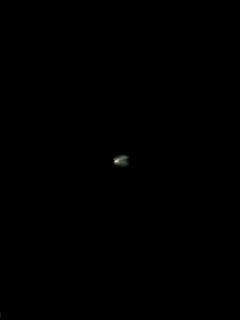 |
| A picture-perfect liftoff from historic Launch Complex 39A |
This is the most powerful rocket since the mighty Saturn V, which last flew in May 1973. It's part of Elon Musk's vision for SpaceX, to make commercial space flight profitable and to make interplanetary travel a reality.
Tuesday's flight was a test flight, really, the first time that the Falcon Heavy had flown. Traditionally, space agencies put in a dummy payload, literally a huge block of cement, to simulate an actual payload and give the rocket something to push around. SpaceX decided to do something less "boring" (Musk's word), and more fun and whimsical. (Elon Musk himself said, in the post-launch press conference, "Silly and fun things are important.") So they mounted Musk's own red Tesla Roadster in the payload bay, and put a dummy wearing SpaceX's own design spacesuit in the driver's seat. They mounted three cameras on the car, and the cameras were live from the moment the rocket took off.
Here are seven cool things about the launch.
 |
| The 27 Merlin 1D engines. |
 |
| Perfect execution. |
2. The two strap-on boosters returned to earth and landed squarely on their targets, almost at the same moment. It was beautifully choreographed. The main booster wasn't so lucky: two of its engines failed on landing, and it crashed into the unmanned drone landing ship at 300 miles per hour. That was the only thing that went wrong with the flight, out of the thousands of things that went right.
 |
| Perfectly synchronized landings. |
3. Some friends of mine were camping in northern Arizona / southern Utah on Tuesday evening, and around 9:30 p.m. they saw this in the sky:
 |
| Trans-Mars injection burn, seen from Earth |
 |
| End of trans-Mars injection burn |
SpaceX planned to do a second burn of the second-stage engine six hours into the flight, to send the rocket into its planned orbit. This is called, rather obviously, a "trans-Mars injection burn". A second burn is normal, it's called an "orbital insertion burn", but you don't normally wait six hours to do it. This was to test the variant of the Merlin 1D rocket engine which will be used on translunar and interplanetary flights. SpaceX engineers were worried that it might literally freeze up in the cold of space and not fire when it was time. What my friends saw was that second burn, working perfectly.
4. Actually, it worked more than perfectly: it worked spectacularly. SpaceX used all the remaining fuel in this second burn, and all calculations show that they will overshoot their target. They were looking to send the rocket into a heliocentric orbit reaching out as far as Mars' orbital path. They sent it into a heliocentric orbit, all right, but it's going to go deep into the asteroid belt between Mars and Jupiter.
 |
| The space Tesla's (or Starman's) trajectory. (Click to enlarge) |
5. The battery in a Tesla Roadster is supposed to be good for 280, 360, or 400 miles. This one lasted for tens of thousands of miles.
 |
| Have battery, will travel. |
6. The touch-panel display on the Roadster's dashboard says "DON'T PANIC!", a nod to Douglas Adams' The Hitchhiker's Guide to the Galaxy. Maybe it has an onboard version?
 |
| The dashboard display. Don't panic! |
7. The cameras on the Tesla ran for as long as the Tesla's battery held out. Musk estimated that the battery held enough charge for 12 hours. I was still watching the live feed about 19 hours later. The cameras eventually faded out, as we knew they would, but before they did, the rocket sent back this last picture.
 |
| Second star to the right, and straight on 'til morning. Elon says, "Crazy things can come true," and here's proof. Safe travels, Starman. |
Photo credits:
My good friend Allison Jackson took the pictures of the orbital insertion burn with her phone. Photos used here with permission.
All other pictures are either photos from SpaceX (or Tesla, in the case of the Roadster) or are screen grabs from SpaceX's live streams of the launch and of Starman's voyage before the batteries died. Used here without permission. I'll delete them if SpaceX or Tesla ask me to.
Want to see some exciting videos of the event?
CGI animation of the launch
The actual launch, the real thing (a shorter version here)
Starman and the space Tesla, sailing through space (also here)
Elon Musk giving a post-launch press conference. Note the euphoria in his face and in his voice.


No comments:
Post a Comment